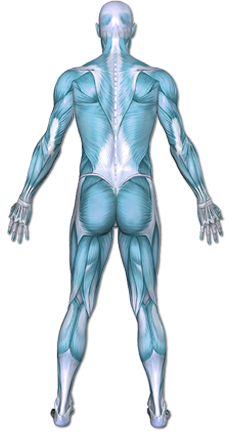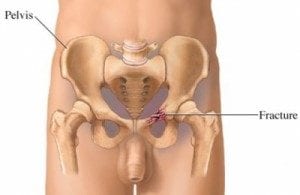Pelvic Fracture
A pelvic fracture is defined as one or more breaks of the bones that make up the pelvis. This is a serious condition that requires immediate care from your doctor.
This content was created using EBSCO’s Health Library
Pelvic fractures are caused by:
- Falls
- High velocity impacts to the body, such as motorcycle or car accidents
This content was created using EBSCO’s Health Library
A risk factor is something that increases your chance of getting a disease or condition. The following risk factors increase your chance of developing pelvic fractures:
- History of falls
- Osteoporosis
- Decreased muscle strength
This content was created using EBSCO’s Health Library
Symptoms of a pelvic fracture include:
- Pelvic pain
- Pain upon walking, or inability to walk
- History of trauma in young children
This content was created using EBSCO’s Health Library
Your doctor will ask about your symptoms and medical history. A physical exam will be done. You may be referred to a doctor who is a trauma specialist and/or a doctor who is a bone specialist. If you are in a car accident, you will probably be taken to a hospital emergency room which is prepared for such situations. Your bodily fluids may be tested. This can be done with:
- Blood tests
- Urine tests
Your bodily structures may need to be viewed. This can be done with:
- X-rays
- CT scan (CAT scan)
- MRI (magnetic resonance imaging)
- Abdominal ultrasound
- Urethrography
- Arteriography
This content was created using EBSCO’s Health Library
You and/or your family should talk with your doctor about the best treatment plan for you. A pelvic fracture is a serious injury that may be complicated by injuries to other parts of your body. Treatment first focuses on stopping any internal or external bleeding, then on the diagnosis and treatment of both the pelvic fracture and any associated injuries. Many people need surgery to repair their pelvic fractures or other injuries. Splints and casts may also be used to limit movement during recovery. Blood transfusions and antibiotics may be part of the early care. Early fracture stabilization, bedrest, and appropriate physical therapy and other rehabilitation care are important to making a good recovery. A physical therapist will use exercises to slowly improve your ability to walk and move without pain. Recovery will usually take months. If you are diagnosed with a pelvic fracture, follow your doctor’s instructions.
This content was created using EBSCO’s Health Library
To help reduce your chance of getting pelvic fractures, take the following steps:
- Prevent falls by using a stable stool or stepladder to reach high places. Add handrails along stairways and place nonslip mats in your bathroom, shower, and under carpets.
- Lower your chance of injuries due to car and motorcycle accidents by always wearing your seatbelt. Never drive if you have been drinking, and don’t ride with anyone else who has either.
- Always use safety precautions to avoid falls during high-risk sports, such as rock climbing and mountaineering.
- Maintain your muscle strength, which will help to prevent falls.
This content was created using EBSCO’s Health Library
This content was created using EBSCO’s Health Library



